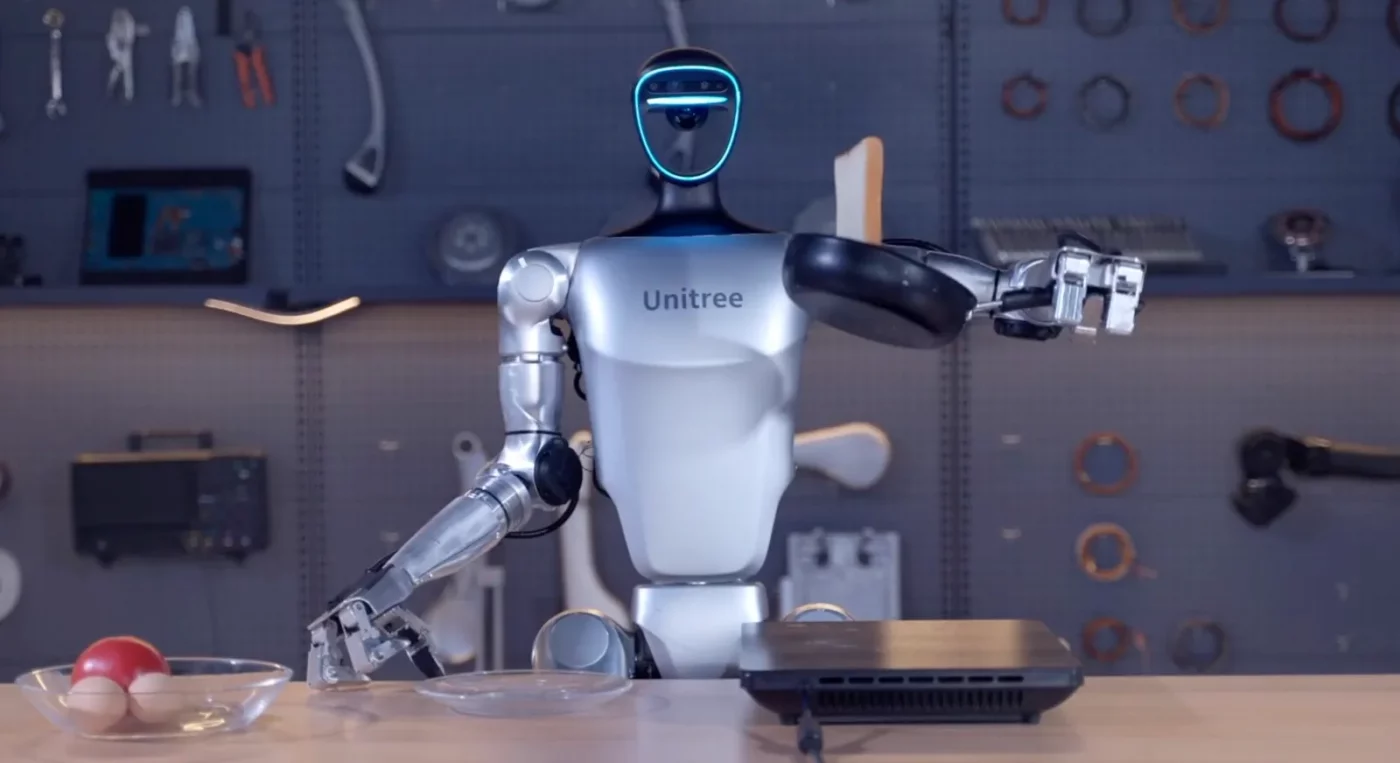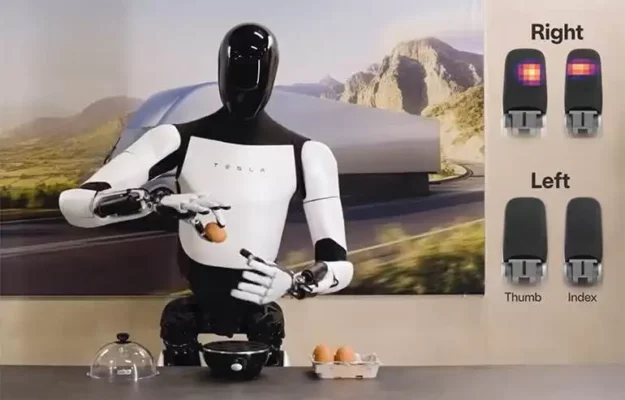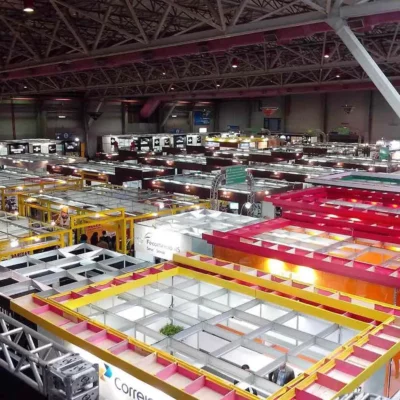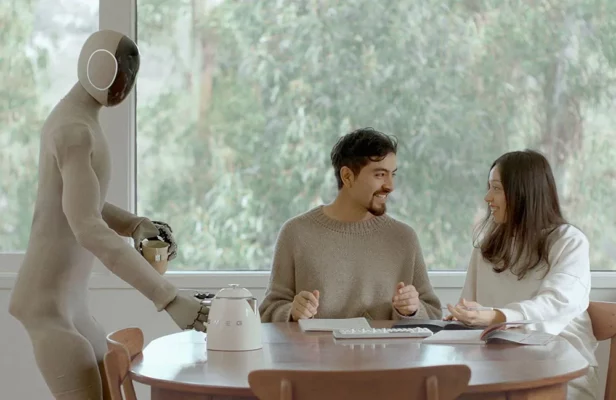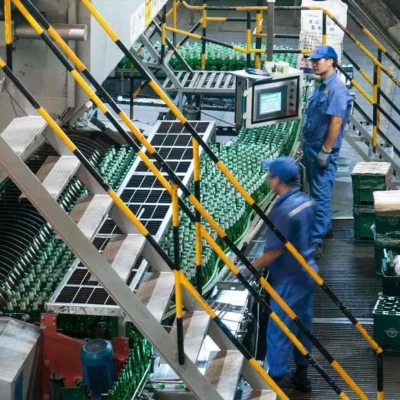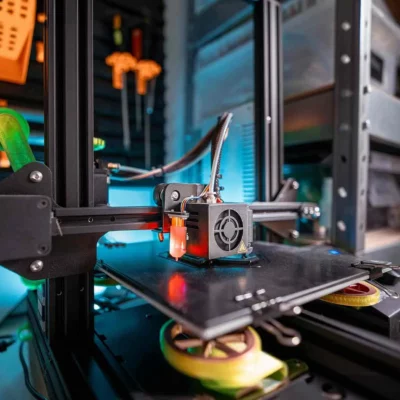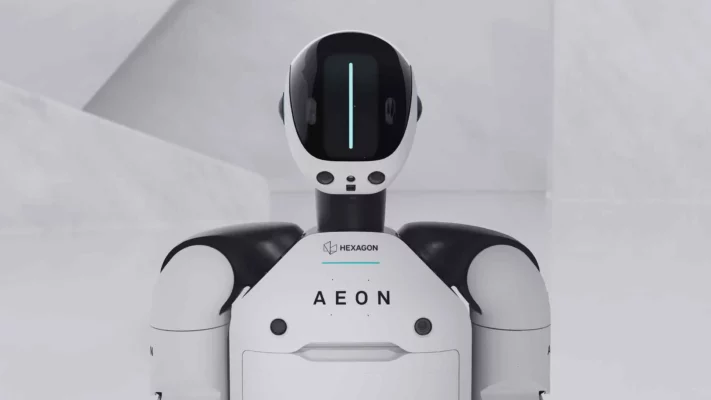Humanoid robots are changing the way you automate tasks. They move, see, and interact like humans, making them useful for assembly, inspection, and material handling. But how do they actually work? These robots rely on sensors, AI, and precise motors to walk, grasp objects, and respond to their environment.
Brands like Tesla, Agility Robotics, and Honda are pushing the limits of what they can do. If you’re looking to improve flexibility, boost efficiency, or solve labor shortages, understanding their mechanics will help you decide if they’re right for your production line. Let’s break down how they work.
A Simplified Breakdown of Humanoid Robots:
Humanoid robots are machines designed to move and act like humans. They have a head, torso, two arms, and two legs, allowing them to walk, pick up objects, and interact with tools. Their human-like design makes them ideal for working in spaces built for people. Unlike traditional robots, they can handle a variety of tasks, making them more flexible for your operations.
How They Differ from Other Industrial Robots:
Most industrial robots are built for specific tasks like welding, packaging, or assembly. They stay in one place and follow pre-programmed movements. Humanoid robots, on the other hand, can move freely and work in changing environments. They are designed to handle tasks that require adaptability, making them a better fit for dynamic production lines.
To learn more about Humanoid Robots, check out this article:
Why They Matter:
The demand for humanoid robots is skyrocketing. In 2023, the market was worth $2.43 billion. By 2032, it’s expected to reach $66 billion, growing at an impressive 45.5% CAGR. That’s because AI and robotics technology are advancing fast, making these robots smarter, more agile, and more useful in real-world applications. Companies are investing in humanoid robots to improve efficiency, reduce labor shortages, and automate complex tasks. If you’re considering automation, now is the time to assess how these robots can fit into your production line. Understanding their growth potential can help you stay ahead. [1]
UBTECH’s humanoid robot, Walker S, integrates into an EV production line, demonstrating its ability to perform repetitive and complex workstation tasks alongside human workers.
Key Components of Humanoid Robots:
Humanoid robots rely on advanced technology to move, sense, and make decisions. Here’s what powers them:
1. Mechanical Structure:
Your humanoid robot’s body mimics human anatomy. It has a head, torso, arms, and legs, designed to function in human-made spaces. Lightweight materials like aluminum and carbon fiber keep it strong but agile.
Actuators and motors work like muscles and joints, enabling movement. Electric, hydraulic, or pneumatic actuators power the limbs. For example, iCub uses tendon-driven joints for precise hand and shoulder movement.
2. Sensors and Perception Systems:
Your robot needs to see, hear, and feel to interact with its surroundings.
- Cameras act as eyes, helping with object recognition and navigation.
- Microphones detect sounds, making speech recognition and environmental awareness possible.
- Tactile sensors in the hands measure pressure and texture, allowing safe and precise gripping.
- IMUs (Inertial Measurement Units) use gyroscopes and accelerometers to keep balance.
3. Control Systems:
Your robot’s CPU is its brain. It processes data from sensors and controls movements. Complex algorithms help it adapt to changes in the environment. iCub, for example, uses an onboard controller for real-time processing.
4. Power Supply:
Humanoid robots run on rechargeable lithium-ion batteries. These batteries balance weight and power efficiency. The Nao robot, for instance, uses a 48.6 Wh battery, providing 90 minutes of operation per charge.
Understanding these components helps you evaluate how humanoid robots can fit into your production line.
How Humanoid Robots Move:
Humanoid robots move by walking on two legs and using robotic arms to manipulate objects. Their motion relies on balance, precision, and adaptability.
Locomotion (Walking and Balance):
Your humanoid robot walks like a human, using bipedal locomotion. To stay balanced, it constantly adjusts its center of mass and shifts its hips to prevent falls. [2]
Walking on uneven terrain is a big challenge. Some robots, like Little HERMES, use real-time feedback systems to copy human balance. This helps them run, jump, and recover from slips, making them more stable. [3]
Manipulation (Gripping and Precision):
Your humanoid robot’s arms and hands are built for precision. The Shadow Dexterous Hand, for example, closely mimics human finger movements, allowing for complex grips. [4] Robotic hands use tendon-driven systems, where small motors control each joint. This lets your robot hold delicate objects without crushing them. [5]
Still, robots don’t match human dexterity yet. Engineers are using machine learning to improve grip strength and flexibility. Future robots will handle tasks like assembly and packaging with even more accuracy. [6]
Better walking and gripping mean your robot can perform more complex jobs. As technology advances, expect smoother movement and more precise control.
Boston Dynamics’ Atlas robot shows off its new skills by manipulating objects and navigating obstacles with human-like agility.
Motion Control Algorithms: How Robots Plan Their Movements
Older humanoid robots moved stiffly because they used Joint Control, where each joint followed fixed instructionswithout real-time adjustments. This made movement rigid and unnatural.
Today’s robots use Whole-Body Motion Control & Predictive Learning. Instead of reacting after losing balance, they anticipate movements ahead of time, just like you shift your weight before walking.
For example:
- Tesla Optimus walks smoothly and adjusts its grip with AI-powered motion control.
- Boston Dynamics’ Atlas uses predictive planning to perform parkour and backflips.
- Engineered Arts’ Ameca moves with natural gestures and facial expressions for better interaction.
This shift from rigid programming to AI-driven motion planning is why modern humanoid robots move more like us than ever before.
View this post on Instagram
Perception and Interaction:
Your humanoid robot needs to understand its surroundings and interact smoothly with people. It does this using sensors, AI, and real-time decision-making.
Environmental Awareness:
Your robot processes sensory data to “see,” “hear,” and “feel.” Cameras let it recognize faces and track movements, helping it respond to visual cues. Microphones detect sounds and speech, improving communication. Tactile sensors in its hands measure pressure and texture, so it can handle delicate objects safely.
AI is what makes your robot smart. It constantly analyzes data from its sensors to make decisions. In hospitals, AI-powered robots monitor patients, detect unusual behavior, and alert nurses when needed. This adaptability allows robots to adjust to new environments without constant reprogramming.
Human-Robot Interaction:
Your robot must understand human gestures and speech. It uses gesture recognition to interpret movements and respond with the right action. Sensors track hand and body motions, then translate them into commands. [7]
Safety is key in human-robot collaboration. Your robot uses multimodal communication—a mix of voice, gesture, and facial recognition—to interact naturally. Built-in safety features let it adjust speed and stop instantly to avoid accidents. [8]
With AI-driven perception and safe interaction, humanoid robots can work side by side with you, improving productivity and efficiency.
Ameca, the advanced humanoid robot, demonstrates real-time facial recognition and spatial awareness by reacting to nearby objects.
Learning & Adaptability:
Your humanoid robot needs to learn and adapt to handle real-world challenges. With machine learning and reinforcement learning, it can refine movements, improve efficiency, and adjust to new environments—all without constant reprogramming.
How Machine Learning Helps Your Robot Improve:
Your robot processes data to make smarter decisions. Machine learning algorithms analyze sensory feedback to fine-tune movement. For example, your robot can adjust its grip strength to hold fragile objects without breaking them.
Reinforcement Learning: Trial and Error Training
Your robot can teach itself new tasks. Reinforcement learning helps it learn by trial and error, just like humans. It tests different approaches, gets feedback, and improves over time. This technique is widely used in robotics to master walking, balancing, and object manipulation. Studies show robots trained this way can adapt to changing environments without manual programming.
How Robots Adapt to New Environments
Your robot can recognize changes in its surroundings and adjust its actions. AI-powered robots in warehouses reroute paths if they detect obstacles, ensuring smooth operations. Studies show that robots using AI can work in factories, hospitals, and logistics with minimal supervision.
Example: Boston Dynamics’ Atlas
Boston Dynamics’ Atlas robot proves how learning boosts performance. Engineers use AI to teach it backflips, parkour, and complex jumps. Each attempt helps it improve, making movements smoother and more controlled.
By using AI and machine learning, your humanoid robot can work more efficiently, adapt to new tasks, and improve over time—all without needing constant updates.
In this video, Boston Dynamics’ Atlas demonstrates advanced reinforcement learning and whole-body athletic intelligence in this parkour challenge, showcasing how humanoid robots can refine movement, maintain balance, and adapt to dynamic environments through AI-driven training.
Communication & Networking:
Your humanoid robot needs fast and reliable communication to process information, respond in real-time, and interact naturally. It does this through cloud computing, 5G, IoT, and natural language processing (NLP).
Cloud Robotics: Smarter Data Processing
Your robot can process data locally or send it to the cloud for complex tasks. Cloud computing gives it extra processing power without needing bulky hardware. This allows your robot to learn from shared data, making it more efficient over time. Cloud robotics is already improving automation and reducing the need for expensive onboard computing. [9]
5G and IoT: Real-Time Connectivity
With 5G and IoT, your robot can communicate faster and more reliably. 5G’s low-latency connection ensures instant updates, making remote control and coordination easier. This is critical in factories, warehouses, and hospitals, where real-time response matters. Companies are already using 5G to make robots work more seamlessly with other smart devices. [10]
Human-to-Robot Communication: Understanding You
Your robot isn’t just a machine—it can understand speech, gestures, and even emotions. Using Natural Language Processing (NLP) and emotion recognition, it responds to voice commands and detects tone changes. This makes it more effective in customer service, healthcare, and personal assistance. For example, robots in elderly care facilitiesnow recognize emotional cues to provide better support.
By improving networking and communication, your humanoid robot becomes smarter, faster, and more interactive, making automation smoother and more human-like.
Energy Efficiency & Power Management:
Your humanoid robot needs efficient power management to run longer and perform better. Optimizing battery life, using smart energy-saving techniques, and exploring new power sources can make a big difference.
Optimizing Battery Life:
Most humanoid robots rely on lithium-ion batteries to power their motors, sensors, and processors. To maximize battery life, manufacturers use energy-efficient actuators and lightweight materials. On average, electric motors in robots reach 80% efficiency, but this drops to 40% when paired with traditional gearboxes. [11]
How Robots Save Energy:
Your robot can recover lost energy through regenerative braking, which sends power back to the battery when slowing down. It can also switch to low-power standby modes when idle. This approach helps reduce energy consumption by up to 30%. [12]
How Long Can a Robot Run?
Run time varies. Agility Robotics’ Digit can work an eight-hour shift with a 4:1 work-to-charge ratio—four minutes of operation for every one minute of charging. [13]
Smart Power Management in Robots:
Tesla’s Optimus robot uses 40+ electromechanical actuators for smooth, efficient movement. Digit’s unique “backward legs” improve mobility while saving power. [14]
What’s Next?
The future of humanoid robots includes wireless charging and hydrogen fuel cells. Wireless charging eliminates plug-in downtime, while hydrogen fuel cells promise longer-lasting energy than batteries. Hybrid fuel cell systems could soon power robots in long-duration operations. [15]
By improving energy efficiency, you can keep your robot running longer, lower costs, and boost sustainability.
Conclusion:
Humanoid robots are changing the way you automate tasks. With AI, machine learning, and real-time communication, they can walk, grasp, and interact like humans. Companies like Tesla, Agility Robotics, and Boston Dynamics are making them smarter and more useful. These robots are no longer just futuristic concepts—they are practical tools for improving productivity, efficiency, and workplace safety. If you’re looking to streamline operations or solve labor shortages, now is the time to explore how they fit into your industry. The future of automation is here, and it’s time for you to take advantage of it.
References:
- Grand View Research. (n.d.). Humanoid Robot Market Report. Retrieved on 19th of February 2025 from https://www.grandviewresearch.com/industry-analysis/humanoid-robot-market-report
- IM Systems. (n.d.). Challenges in Building Humanoid Joints: Part 1 – Legs & Balance. Retrieved on 19th of February 2025 from https://imsystems.nl/challenges-in-building-humanoid-joints-part-1-legs-balance/
- The Robot Report. (n.d.). Bipedal Robot Has Human-Like Balance, Running, and Jumping. Retrieved on 19th of February 2025 from https://www.therobotreport.com/bipedal-robot-has-humanlike-balance-running-jumping/
- Shadow Robot Company. (n.d.). Dexterous Hand Series. Retrieved on 19th of February 2025 from https://www.shadowrobot.com/dexterous-hand-series/
- The Robot Report. (n.d.). Shadow Robot’s Dexterous Hand Takes Manipulation to the Next Level. Retrieved on 19th of February 2025 from https://www.therobotreport.com/shadow-robot-dex-ee-hand-takes-manipulation-to-next-level/
- Columbia Engineering. (n.d.). Highly Dexterous Robot Hand Can Operate in the Dark – Just Like Us. Retrieved on 19th of February 2025 from https://www.engineering.columbia.edu/about/news/highly-dexterous-robot-hand-can-operate-dark-just-us
- ResearchGate. (n.d.). Gesture Recognition for Human-Robot Collaboration: A Review. Retrieved on 19th of February 2025 from https://www.researchgate.net/publication/314292635_Gesture_recognition_for_human-robot_collaboration_A_review
- ArXiv. (n.d.). Enhancing Safety in Human-Robot Interaction with Real-Time Adaptation. Retrieved on 19th of February 2025 from https://arxiv.org/abs/2308.03690
- Ericsson. (n.d.). Cloud Robotics: 5G Paves the Way for Mass-Market Automation. Retrieved on 19th of February 2025from https://www.ericsson.com/en/reports-and-papers/ericsson-technology-review/articles/cloud-robotics-5g-paves-the-way-for-mass-market-automation
- Forbes. (n.d.). The Role of 5G in Driving Robotics Innovation. Retrieved on 19th of February 2025 from https://www.forbes.com/councils/forbestechcouncil/2022/11/02/the-role-of-5g-in-driving-robotics/
- Frontiers in Robotics & AI. (n.d.). Energy-Efficient Actuators in Humanoid Robots. Retrieved on 19th of February 2025 from https://www.frontiersin.org/journals/robotics-and-ai/articles/10.3389/frobt.2018.00129/full
- Automate.org. (n.d.). ABB Robotics Launches Energy Efficiency Service to Save Costs & Enhance Sustainability. Retrieved on 19th of February 2025 from https://www.automate.org/robotics/news/abb-robotics-launches-energy-efficiency-service-to-help-customers-save-costs-and-enhance-sustainability
- Interesting Engineering. (n.d.). Agility Robotics’ Digit: The Humanoid Robot Transforming Warehouses. Retrieved on 19th of February 2025 from https://interestingengineering.com/photo-story/agility-robotics-digit-humanoid-robot
- Xpert Digital. (n.d.). Optimus Roboticus: Tesla’s Humanoid Robot Vision. Retrieved on 19th of February 2025 from https://xpert.digital/en/optimus-roboticus-humaniformis/
- ArXiv. (n.d.). Hybrid Fuel Cell Systems for Long-Duration Humanoid Robot Operations. Retrieved on 19th of February 2025 from https://arxiv.org/abs/1702.00325
